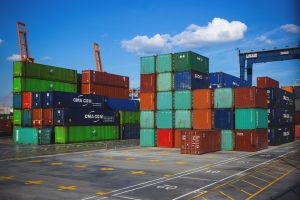Construction sites are full of hazards, including heavy moving machinery, exposed and unsafe electrical systems, flammable items, and work at heights.
If you're aspiring to work on construction sites, safety skills must be your greatest priority. You cannot just make do by staying extra cautious. Instead, you have to learn safety skills from professional training.
If you're curious about what these skills are, here's everything you need to know before joining the workforce.
1. Hazard Identification and Assessment
Potential hazard identification and assessment is one of the most essential skills required for construction workers, preventing major mishaps at the worksite.
In the construction industry, hazards can be anything that can cause damage to the surroundings, injure workers, or make everyone fall sick. Common examples are heavy machinery without guard, exposed live wire, unstable ladder or scaffold, objects thrown around the site, and harsh chemicals.
With the right skills, workers can inspect the site safety, assess hazards, and identify the best control measures to reduce the risk extent or eliminate the risk completely.
A skilled worker understands that no worksite is 100% safe and takes safety measures seriously even after risk elimination.
2. Proper Use of Personal Protective Equipment
The next important skill is the proper utilisation of safety gear. Personal protective equipment (PPE), when worn correctly, protects workers from severe injuries and loss of life. With training, workers know exactly which PPE can offer them comprehensive safety.
For instance, all workers must be able to pick the suitable PPE for specific tasks. They must be knowledgeable about inspecting and recognising damage or signs of wear and tear on PPE and avoid wearing them.
They must know how to fit and adjust harnesses, gloves, goggles, and other gear according to their body type.
3. Safe Practices of Working at Heights
Construction work often involves working at heights, such as on ladders, scaffolds, rooftops, and other elevated platforms. Thus, falling from height is one of the leading causes of worksite injury and death in Australia.
The course must know the right use of harnesses, lanyards, and fall arrest systems, the correct choice of anchor points, proper inspection of fall protection and fall arrest systems, precise calculation of fall clearance distances, principles of working with safe zones, and the correct method of setting up guardrails.
In height work, skills alone aren't enough. All workers must also undergo a working at heights course and be certified by a renowned institution. Otherwise, the employer may get penalised for non-compliance. Further, formal training doesn't just ensure enhanced safety but also boosts confidence, reduces fear, and creates a supportive environment.
4. Proper Machinery and Tool Operation
Construction workers need to operate diverse machinery (forklifts, excavators, etc.) and tools (circular saws, power drills, etc.).
Workers must be trained in manufacturer-approved training and skilled at operating each of them. They must be able to conduct safety checks before operating them, know their safe speed limit, and stay within designated zones.
Training ensures they never ignore safety features during work and are aware of other workers at the site, ensuring everyone's protection.
5. Fire Safety Procedures
Construction sites have flammable materials like solvents, paints, and gas cylinders everywhere, making them prone to fire risks.
Workers must have proper storage and management skills of flammable items and know the best ways of using different fire extinguisher types (more than 50% of individuals who operate a fire extinguisher do it the wrong way).
They must create assembly points and evacuation routes in the event of hazards and take effective steps for emergency situations. Employers must conduct regular drills to keep workers used to emergency fires. This ensures they don't freeze during the actual incident and take effective steps quickly.
6. Electrical Safety Planning
Another issue is electrical hazards due to exposed wiring, temporary power lines, and electrical tools. Workers must be skilled in identifying live wires and hazardous electrical settings, the correct usage of insulated tools and PPE while working with electrical details.
They must also learn prompt reporting of damaged equipment or faulty wiring and lockout or tagout procedures to prevent energisation.
7. Manual Handling Skills
Most construction site tools and materials are heavy. Musculoskeletal injuries from manually carrying them are common.
Another crucial construction site skill includes proper lifting of heavy-weight objects. They must keep loads near their body, bend their knees instead of their backs, seek help for excessively heavy loads, and use machines wherever required.
Proper manual lifting practices protect workers from straining their bodies, getting hurt, and having severe accidents.
Parting Words
Besides these, other basic but mandatory skills include first aid, rescue, communication, and teamwork. Now, seek a renowned institute that teaches all essential skills and take the next step today to achieve your dreams soon.






